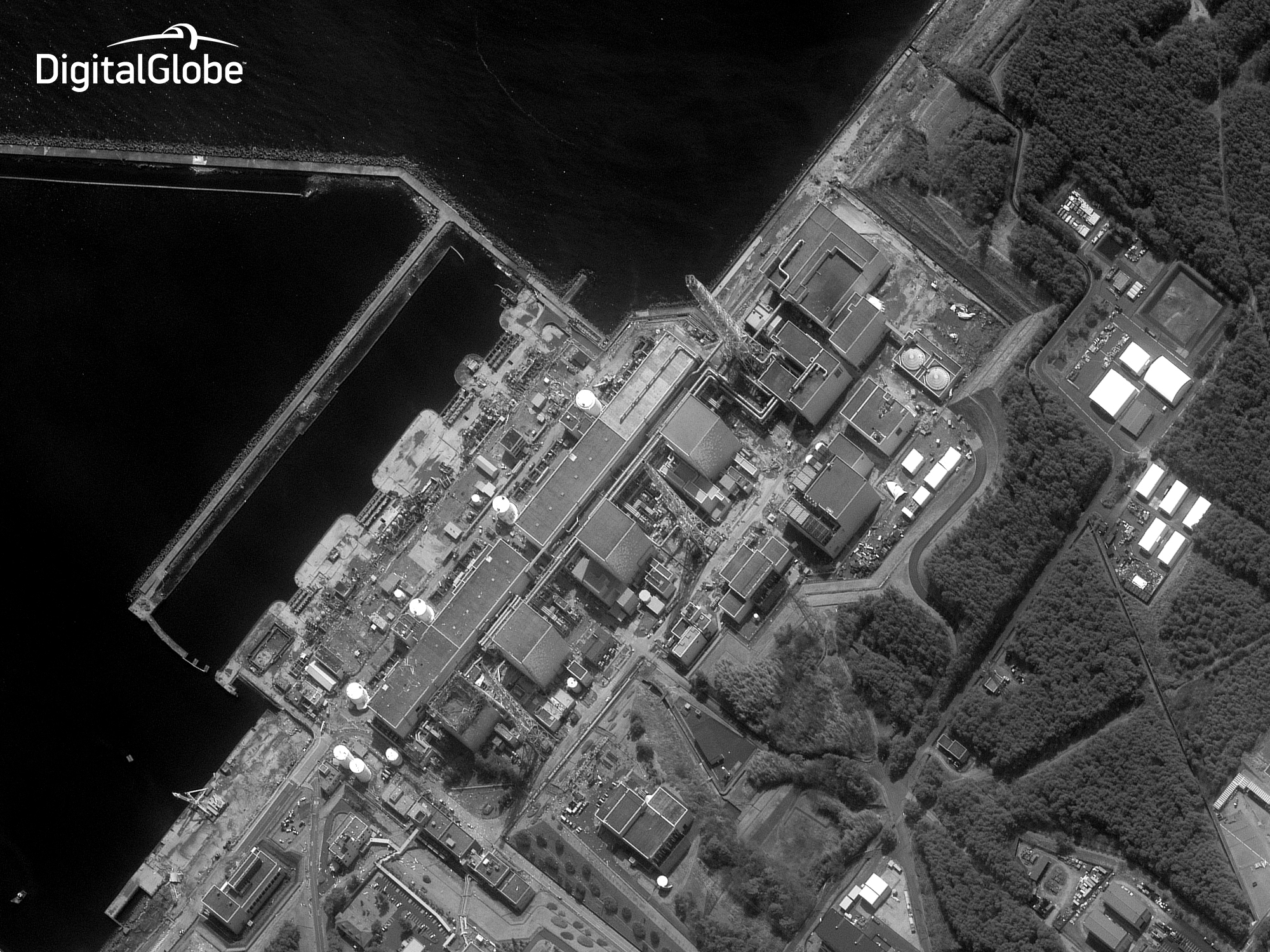
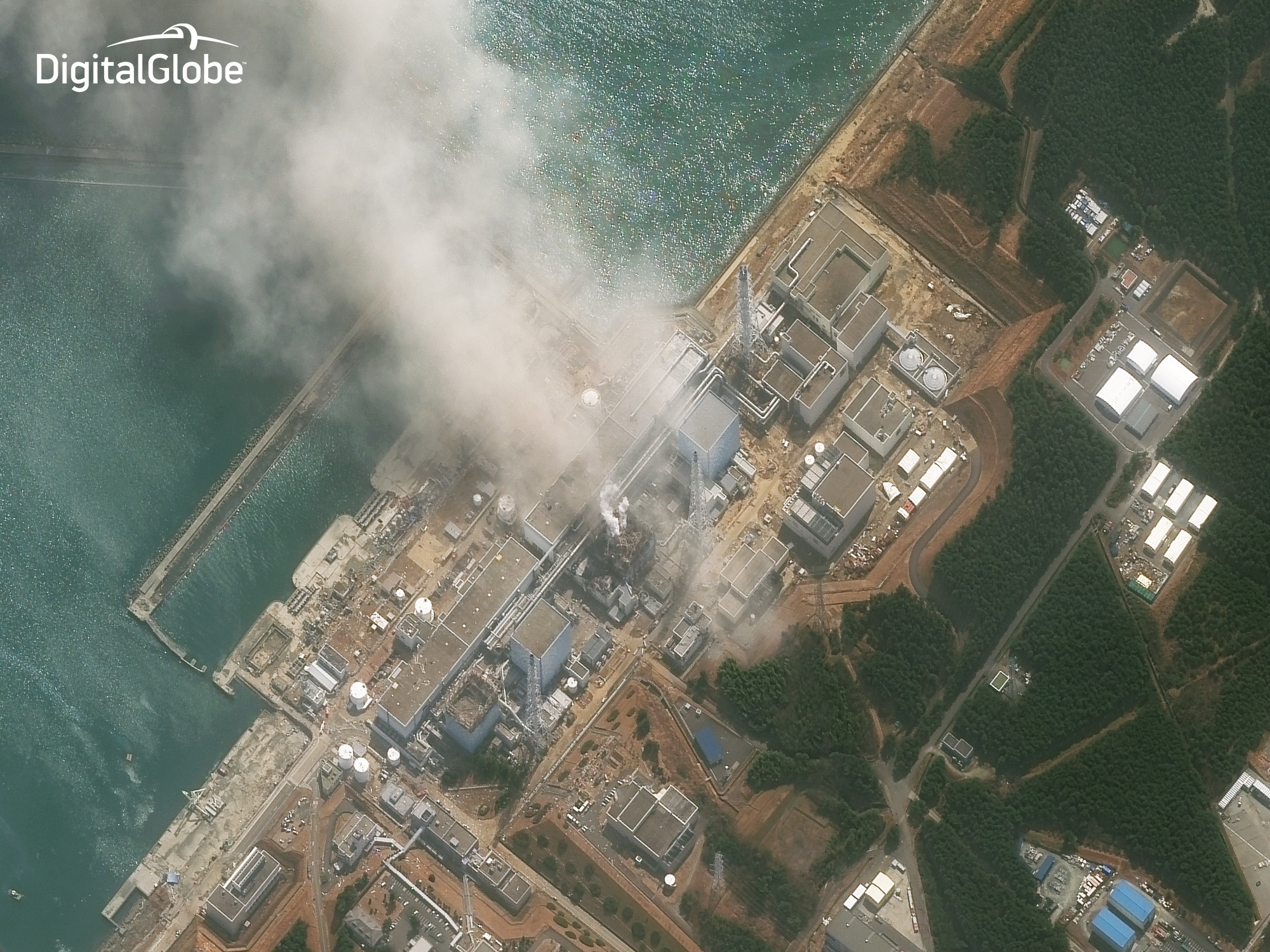 An image taken two days later at 51 degrees off-nadir (33 degree target elevation) showed damage to all four reactor buildings.
An image taken two days later at 51 degrees off-nadir (33 degree target elevation) showed damage to all four reactor buildings.
 More recently, we supported the relief efforts that followed the Nepal earthquake in April with high off-nadir imaging. In fact, this was initially the only commercial satellite imagery available of the disaster area. We used this capability to capture a total of 28 shots below 30 degrees target elevation in the days following the disaster.
The morning after the earthquake struck, our GeoEye-1 satellite captured useful imagery of Kathmandu by pointing 50 degrees off-nadir to shoot through a break in the heavy cloud cover.
More recently, we supported the relief efforts that followed the Nepal earthquake in April with high off-nadir imaging. In fact, this was initially the only commercial satellite imagery available of the disaster area. We used this capability to capture a total of 28 shots below 30 degrees target elevation in the days following the disaster.
The morning after the earthquake struck, our GeoEye-1 satellite captured useful imagery of Kathmandu by pointing 50 degrees off-nadir to shoot through a break in the heavy cloud cover.

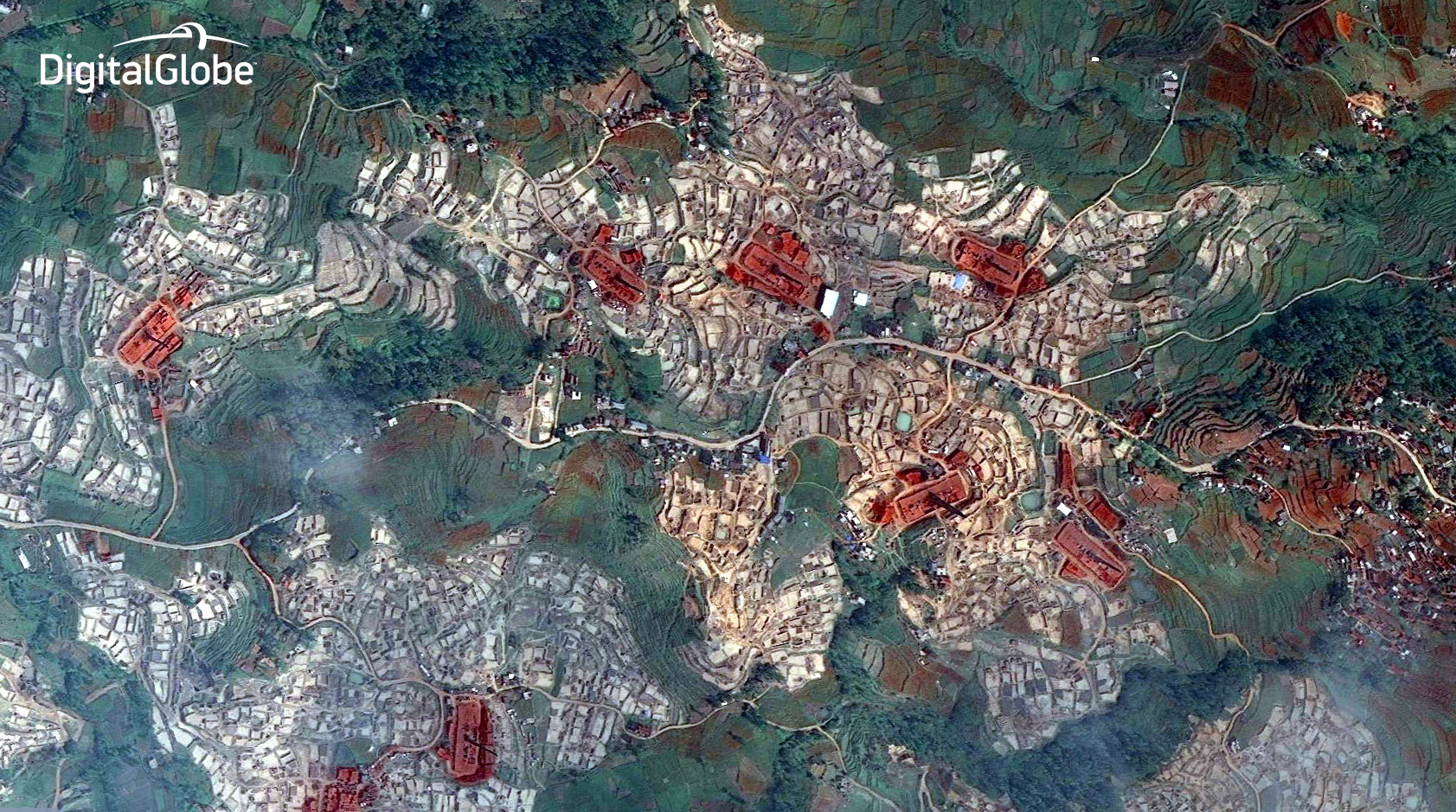 And since we have an artistic streak, we have also used this capability to capture this truly stunning photo of Mt. Fuji, Japan, taken at a target elevation angle of just 3 degrees, i.e., with the satellite just 3 degrees above the horizon as viewed from Mt. Fuji!
And since we have an artistic streak, we have also used this capability to capture this truly stunning photo of Mt. Fuji, Japan, taken at a target elevation angle of just 3 degrees, i.e., with the satellite just 3 degrees above the horizon as viewed from Mt. Fuji!
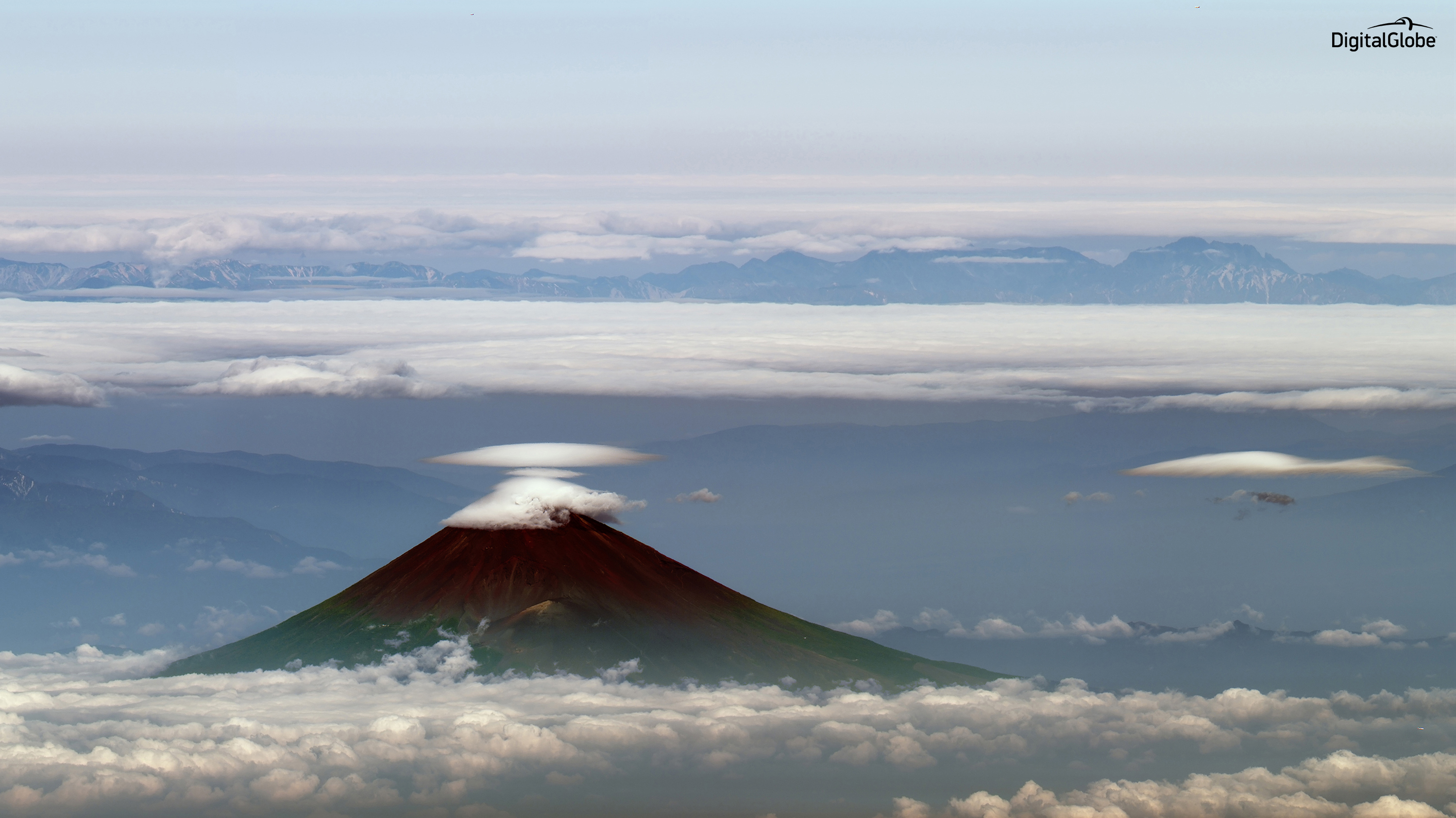 And, closer to our home is a 1-meter resolution shot of Denver, Colorado, taken when WorldView-3 was 340 miles southwest of Los Angeles—nearly 1,400 miles from Denver—at a target elevation angle of 8 degrees (off-nadir angle 64.5 degrees).
And, closer to our home is a 1-meter resolution shot of Denver, Colorado, taken when WorldView-3 was 340 miles southwest of Los Angeles—nearly 1,400 miles from Denver—at a target elevation angle of 8 degrees (off-nadir angle 64.5 degrees).
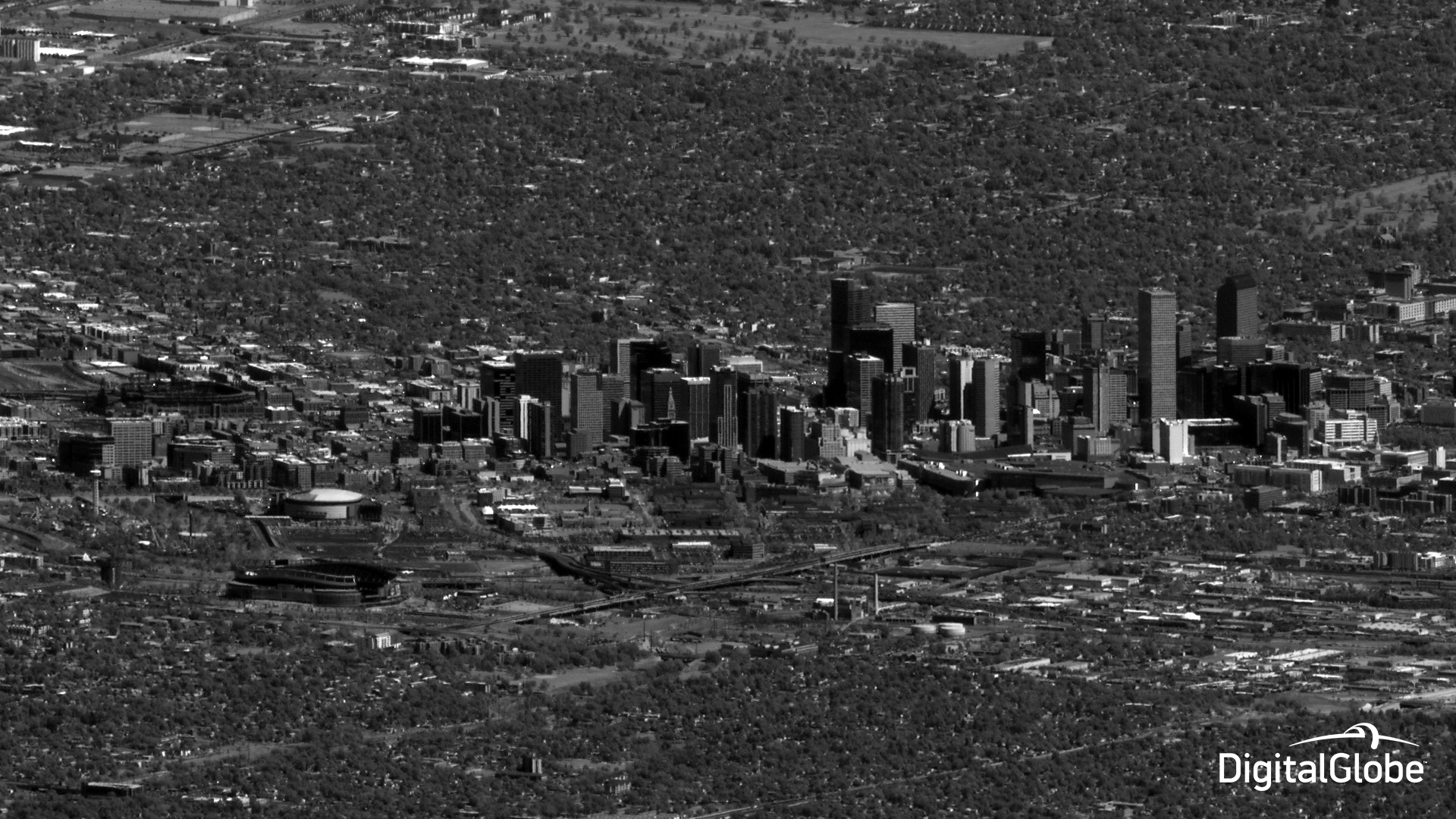 Pointing agility also allows our satellites to image the world at different times of day. Our satellites are in “sun synchronous” orbits, in which they orbit the earth mostly from pole to pole every 90 minutes. This means that they cross the equator from north to south at the same local time every day. However, this doesn’t quite mean that they only can take images at one time during the day.
To understand this, think about time zones. When one of our satellites is flying over the U.S. Central Time Zone, it can point far to the east, where it can see places in the Eastern Time Zone, one hour later in the day, and it can point far to the west, where it can see places in the Mountain Time Zone, one hour earlier in the day. And because not all of our satellites cross the equator at the same time of day, and because of the large optical instruments they carry, we are able to capture high-resolution imagery (better than 1 m) from around 9:30 a.m. until 2:30 p.m., local time, anywhere in the world. In the above example of Denver, the satellite was over the Pacific Time Zone, taking a picture of the Mountain Time Zone, an hour later in the day.
This visualization shows the increasingly large areas that are within the satellite's field of view as its off-nadir pointing angles increase from 10 degrees, to 25 degrees, to 50 degrees.
Pointing agility also allows our satellites to image the world at different times of day. Our satellites are in “sun synchronous” orbits, in which they orbit the earth mostly from pole to pole every 90 minutes. This means that they cross the equator from north to south at the same local time every day. However, this doesn’t quite mean that they only can take images at one time during the day.
To understand this, think about time zones. When one of our satellites is flying over the U.S. Central Time Zone, it can point far to the east, where it can see places in the Eastern Time Zone, one hour later in the day, and it can point far to the west, where it can see places in the Mountain Time Zone, one hour earlier in the day. And because not all of our satellites cross the equator at the same time of day, and because of the large optical instruments they carry, we are able to capture high-resolution imagery (better than 1 m) from around 9:30 a.m. until 2:30 p.m., local time, anywhere in the world. In the above example of Denver, the satellite was over the Pacific Time Zone, taking a picture of the Mountain Time Zone, an hour later in the day.
This visualization shows the increasingly large areas that are within the satellite's field of view as its off-nadir pointing angles increase from 10 degrees, to 25 degrees, to 50 degrees.
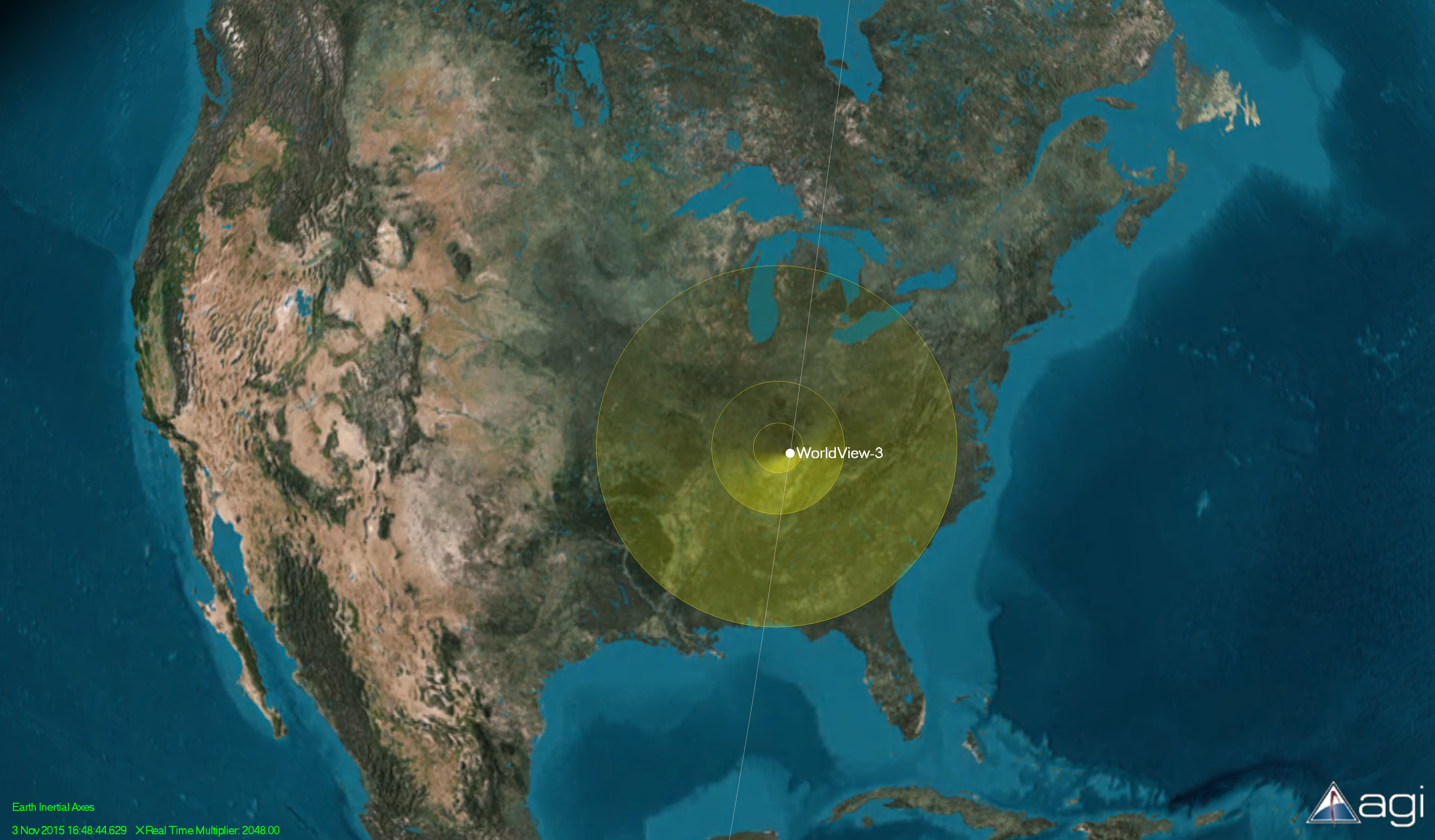 Finally, pointing agility is directly related to how often a satellite constellation can view a single place on earth, how many targets it can collect as it is flying overhead, and how quickly it can image a whole state, country, or continent. We’ll cover that topic in the next edition of Real Technology, Real Benefits.
Dr. Walter Scott is DigitalGlobe’s Founder and Chief Technical Officer.
Finally, pointing agility is directly related to how often a satellite constellation can view a single place on earth, how many targets it can collect as it is flying overhead, and how quickly it can image a whole state, country, or continent. We’ll cover that topic in the next edition of Real Technology, Real Benefits.
Dr. Walter Scott is DigitalGlobe’s Founder and Chief Technical Officer.